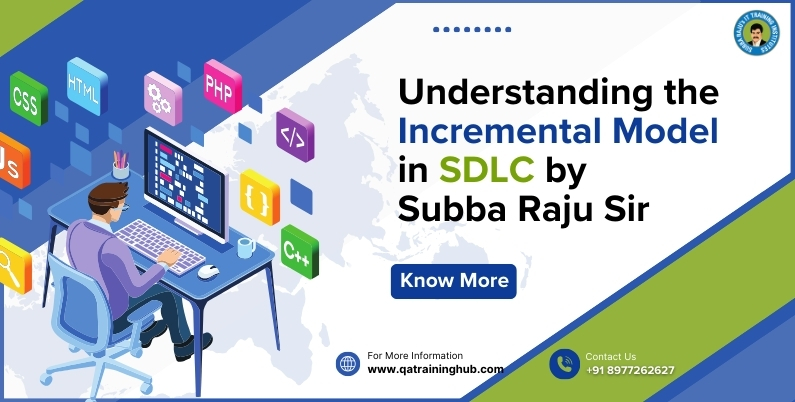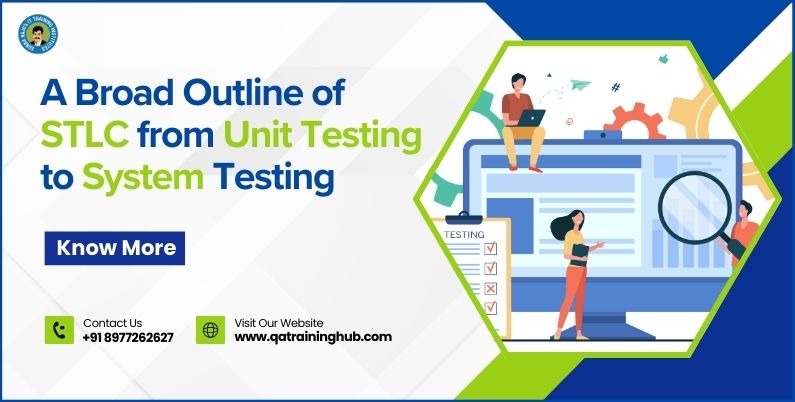A Guide for Software Developers on SDLC Methodologies

In the world of software development, achieving a seamless, efficient, and high-quality product relies on following a structured framework. Known as Software Development Life Cycle (SDLC) methodologies, these frameworks provide a roadmap to guide developers, project managers, and stakeholders from initial concept to final delivery. With each methodology offering distinct advantages, understanding them can empower teams to choose the best approach for their projects and optimize workflow, quality, and resource management. This guide will walk you through the most widely used SDLC methodologies, highlighting their benefits, limitations, and best-use scenarios. With the growing demand for skilled professionals trained in these methodologies, developers who understand SDLC frameworks will be well-equipped to drive project success and adapt to evolving industry trends. If you’re aiming to enhance your skills, consider SDLC methodologies in Hyderabad, where a thriving tech ecosystem provides ample opportunities to dive deep into these methodologies and apply them in real-world projects.
For software developers, familiarizing oneself with SDLC methodologies is essential for staying competitive and meeting the unique demands of each project. Whether it’s the linear, well-defined phases of the Waterfall Model or the flexible, iterative process of Agile, each methodology caters to specific needs, timelines, and project sizes. Selecting the right SDLC approach can accelerate development, minimize errors, enhance communication, and ensure that the final product aligns perfectly with client expectations.
This comprehensive guide will help you understand the core SDLC methodologies, giving you the foundation you need to approach each project with confidence and clarity.
What is SDLC?
The Software Development Life Cycle (SDLC) is a structured approach for software development that provides a comprehensive plan for building, deploying, and maintaining software. SDLC methodologies guide teams through various phases like planning, designing, coding, testing, deployment, and maintenance.
Popular SDLC Methodologies
Several SDLC methodologies have been adopted over the years, each with unique strengths tailored to different types of projects and team structures. Let’s delve into some of the most widely used SDLC methodologies to understand their features and advantages.
1. Waterfall Model
The Waterfall Model is one of the earliest and most linear SDLC methodologies, ideal for projects with well-defined requirements. Here, each phase must be completed before moving on to the next, making it easy to manage and track progress.
- Strengths: Clear structure, easy to manage.
- Ideal for: Projects with stable requirements.
- Drawbacks: Limited flexibility for changes after the project starts.
The Waterfall model is a traditional software development methodology characterized by its linear and sequential approach. It consists of five distinct phases: Requirements, Design, Implementation, Verification, and Maintenance. In this model, each phase must be completed before moving on to the next, which can lead to a well-structured project with clear documentation and milestones.
Requirements: In this initial phase, the project’s scope is defined, outlining what the system needs to do. This includes gathering comprehensive specifications and understanding user needs.
Design: Based on the gathered requirements, the design phase focuses on creating the architecture of the system, detailing how the requirements will be met through specific design plans.
Implementation: During implementation, the actual coding and development occur according to the design specifications. This phase involves translating design documents into a functional system.
Verification: After implementation, the system undergoes testing to ensure it meets the specified requirements. This is where any defects are identified and addressed.
Maintenance: Once the software is deployed, the maintenance phase ensures it continues to function properly, addressing any issues that arise over time. While the Waterfall model has its advantages, such as clarity and structured progress, it also has limitations. Its rigidity makes it difficult to accommodate changes once a phase is completed, often leading to late detection of issues. This can result in increased costs and delays, particularly in fast-paced environments where requirements may evolve rapidly
2. Agile Methodology
Agile methodology emphasizes flexibility, collaboration, and customer feedback, breaking down the development process into small, manageable iterations. Agile is a preferred choice for projects with evolving requirements and fast-paced deliverables.
- Strengths: Adaptable to changing requirements, customer-centric.
- Ideal for: Dynamic and fast-paced projects.
- Drawbacks: Requires skilled teams and regular communication.
3. Scrum
Scrum, an Agile framework, operates on short cycles called “sprints,” typically lasting two to four weeks. Scrum teams work collaboratively to complete a specific set of deliverables during each sprint, making it ideal for complex projects with rapid timelines.
- Strengths: Encourages teamwork, incremental progress.
- Ideal for: Projects with frequently changing requirements.
- Drawbacks: Can be challenging to scale for larger projects.
4. V-Model (Verification and Validation Model)
The V-Model, or Verification and Validation model, is an extension of the Waterfall Model. It emphasizes testing at each development phase, ensuring higher quality standards throughout the SDLC process.
- Strengths: Improved quality control, systematic testing approach.
- Ideal for: Projects requiring high reliability, such as healthcare or defense.
- Drawbacks: Inflexible for projects with changing requirements.
5. Incremental Model
The Incremental Model breaks down the project into smaller, manageable pieces developed and delivered in increments. Each increment adds a new feature or functionality, allowing feedback and gradual improvement.
- Strengths: Flexible, provides early delivery of essential features.
- Ideal for: Large, complex projects that benefit from gradual implementation.
- Drawbacks: Complex to manage without skilled project management.
6. DevOps
DevOps is a modern approach that integrates development (Dev) and operations (Ops) teams to improve collaboration, speed, and efficiency. It focuses on automating processes and ensures continuous integration and delivery (CI/CD).
- Strengths: Accelerates development, enhances collaboration.
- Ideal for: Large-scale projects with a need for continuous deployment.
- Drawbacks: Requires a shift in culture and investment in automation tools.
Choosing the Right SDLC Methodology
The choice of SDLC methodology can greatly impact the success of a project. Consider factors like project size, complexity, customer involvement, and budget constraints. For instance, the Waterfall model might work best for simpler projects with fixed requirements, while Agile or Scrum are suitable for projects needing regular feedback and flexibility.
Advantages of SDLC Methodology
- Structured and Organized Process
SDLC provides a well-defined structure that guides the development process step-by-step, making it easy to track progress, manage timelines, and reduce complexity. - Enhanced Project Control
By breaking down the development process into distinct phases, SDLC enables project managers to monitor and control the progress of each phase, ensuring that the project stays on track. - Improved Product Quality
SDLC methodologies incorporate thorough planning, systematic testing, and review phases, which contribute to higher-quality products that meet requirements and are more reliable. - Risk Mitigation
The structured nature of SDLC allows teams to identify and address risks early in the process, which reduces the likelihood of costly issues or delays later on. - Clear Roles and Responsibilities
Each phase in SDLC specifies the roles and responsibilities of the team, which enhances accountability and clarity for all stakeholders involved. - Enhanced Communication and Documentation
SDLC methodologies emphasize detailed documentation, ensuring that all team members, stakeholders, and future developers understand the project’s workflow, objectives, and requirements. - Easier Maintenance and Future Scalability
By enforcing standards and documentation throughout development, SDLC methodologies make maintenance and scaling more manageable, as new team members or future changes can be easily implemented.
Disadvantages of SDLC Methodology
- Rigidity
Traditional SDLC models like the Waterfall model are inflexible, which can be a drawback if project requirements change or if the scope evolves mid-development. - Time-Consuming Process
The structured approach of SDLC often involves extensive documentation, detailed planning, and strict adherence to phases, which can lead to delays, especially in large projects. - High Cost of Revisions
With rigid SDLC models, implementing changes or accommodating new requirements can be costly and disruptive, as it may require revisiting earlier stages of the process. - Potential for Over-Documentation
While documentation is essential, SDLC methodologies sometimes lead to excessive paperwork, which can slow down the development process and require additional resources. - Limited Flexibility for Agile Requirements
SDLC models that do not incorporate iterative or Agile approaches may struggle to adapt to dynamic, fast-paced projects where requirements frequently change. - Requires Skilled Management
Effective implementation of SDLC requires experienced project managers and team members who can handle complex workflows, phases, and documentation requirements. - Customer Feedback Comes Late in Some Models
In traditional SDLC methodologies, such as Waterfall, customers may only see the product at the end of the process, which limits opportunities for early feedback and may lead to dissatisfaction if the product does not meet expectations.
Conclusion
Understanding SDLC methodologies in Hyderabad is essential for navigating the complexities of software development. Each methodology, from the straightforward Waterfall model to the adaptive Agile framework, offers unique advantages and trade-offs, allowing teams to choose an approach that aligns with project requirements, resources, and timelines.
For software professionals, gaining proficiency in SDLC methodologies in Hyderabad provides a significant edge, enhancing their ability to deliver high-quality projects efficiently and effectively. Recognizing which methodology best suits a given project can streamline processes, improve collaboration, and enhance the final product’s quality.
As technology evolves, the demand for skilled professionals with a solid grasp of SDLC methodologies continues to grow. For those looking to deepen their expertise, SDLC training in Hyderabad offers an excellent opportunity to build a strong foundation in these methodologies and apply them in real-world scenarios. By investing in SDLC knowledge, software developers and project managers can make informed decisions, better adapt to changing project dynamics, and ultimately drive greater success in their development careers.Whether you’re a beginner or a seasoned developer, understanding SDLC methodologies enables you to approach projects with clarity and confidence—qualities that are indispensable in today’s competitive software industry.



